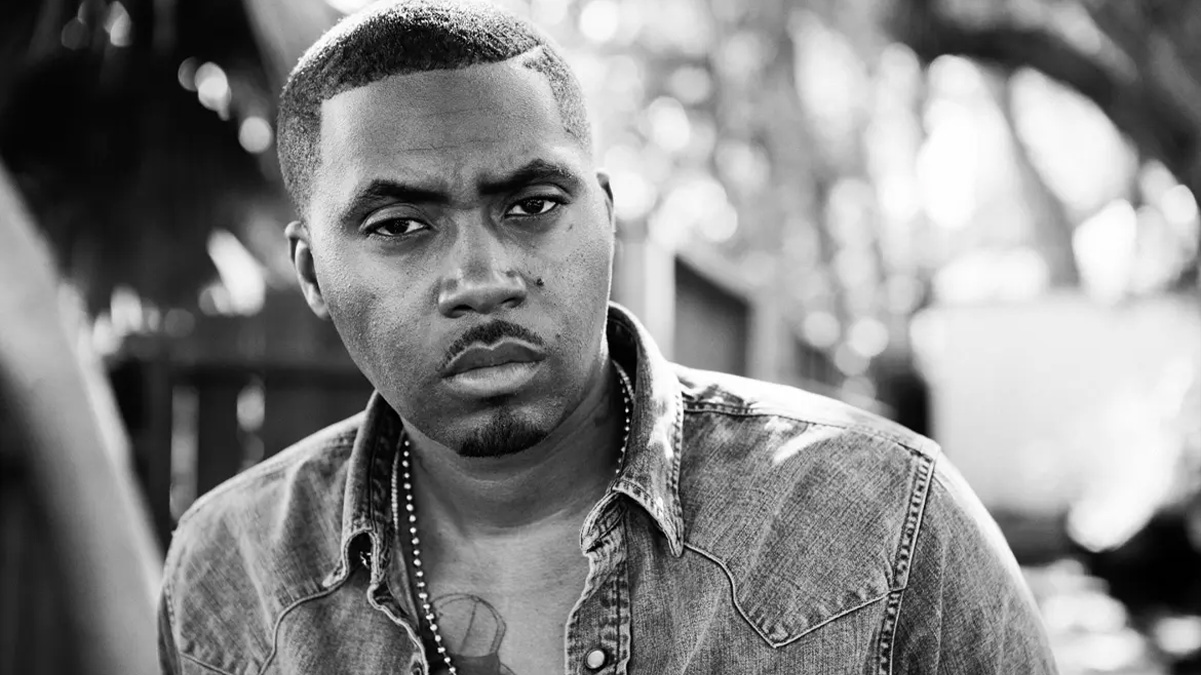Method
We read the albums and grouped vocabulary into simple families: city (NYC, Queens, bridge), street (hood, block, hustle), weapons (gun, bullet, kill), police/justice (police, cop, court, judge, jail), money (money, cash), drugs (weed, coke). We track the intensity of violence not to chase numbers, but to illuminate a narrative.
1) The Beginning: The City Before the Weapon
Early on, Nas frames the city before he draws: the prose leans on place-names and blocks — “Queens,” “bridge,” “project” — and on mood words — “hood,” “block,” “hustle”. Violence is present but underlying:
“I never sleep, ’cause sleep is the cousin of death.”
This observer’s gaze belongs to the post–Rodney King era (1992) and the aftershock of the L.A. riots: police words — “police,” “cop,” “court” — already surface, but the point is precision on the ground. When Nas dreams, he dreams against the architecture of injustice: If I Ruled the World imagines an end to police harassment (“without cops harassin’”) just as the 1994 Crime Bill cements mass incarceration. His “wise man” posture isn’t abstract — it answers U.S. penal policy and the racial divide it deepened.
2) The Peak: When the Streets Set the Rules
By the late ’90s, the syntax tightens: the street and weapon families take over — “gun,” “bullet,” “kill,” “murder” — while police/justice weighs heavier — “police,” “court,” “judge,” “jail”. New York lives through the Giuliani years and zero-tolerance: the city is no longer mere backdrop; it dictates the tone. Nastradamus concentrates the red zone: the set becomes a logic; the imaginary is armed. But Stillmatic converts that hardness into a symbolic fight: the weapon stays in the text, in service of restoring authority (the “Ether” clash). Here Nas’s dual nature shows: utopia (“Imagine smoking weed in the streets without cops harassin’…”) coexists with survival (a combative lexicon). The U.S. shifts into post-9/11 securitization; on the urban scale, police control practices settle in, and you hear it in the words: the repetition of “police,” “cop,” “court,” “jail” becomes background noise. In parallel, material ascent pulls in other terms — “money,” “cash,” “Benjamins” — capturing temptation and pressure: to win, to be exposed, to defend oneself. The sentence, then, “endures” the streets even as it describes them.
3) Today: Memory Replaces Reflex
In the Hit-Boy era, Nas shifts from a language of retaliation to a language of legacy. On King’s Disease III, weapon words recede (≈8) and police/justice mentions stay contained (≈12), but the city remains very present (≈114: “Queens,” “hood,” “queens”): New York isn’t a battlefield anymore; it’s proof of origin, a memory bank. The words that surface are verbs of motion and poise — “yeah,” “like,” “go,” “new,” “hood,” “queens,” “time” — setting a tone of control, not escalation. The violence score stays measured compared with the past (≈192).
Magic 2 pushes that reset: violence drops (≈121 — the lowest of the recent run), police/justice markers almost vanish (≈1), while vocabulary diversity peaks (a tighter, more precise delivery). Dominant words aren’t about confrontation anymore but about assurance and address: “like,” “motion,” “black,” “let,” “know,” “hit,” “since.” In the word families, the city remains (≈22), the street no longer crushes the discourse (≈23), and weapons are marginal (≈10).
On Magic 3, the line holds: moderate violence (≈149), weapons at the low end (≈5), city still solid (≈65). Salient terms speak to mentorship and lineage — “represent,” “young,” “back,” “got,” “one” — more than to a theatre of operations. In other words, hardness isn’t denied; it’s reworded: a few touches suffice to recall neighborhood reality while the throughline is transmission. In an America shaped by Black Lives Matter and debates over police violence, that choice of words is both aesthetic and political: speaking from the streets, beyond the reflex to strike back.
A Clear Line (Late Career)
What the words show: 1) King’s Disease III reframes New York as memory (city terms remain high), trims the arsenal (few weapon words), and favors words of movement and time (“go,” “time”); 2) Magic 2 turns verbal economy into a virtue (very diverse vocabulary, lowest violence, near-absence of police/justice) and leans on markers of assurance and address (“like,” “know,” “hit”); 3) Magic 3 consolidates the legacy/transmission axis (“represent,” “young”), with few weapons and a city that testifies to where one speaks from, not what still needs to be fought.
What this says about the United States: from the 1990s’ mass criminalization and “zero-tolerance” rhetoric to the BLM decade, Nas’s language shifts from alarm to composure: fewer “gun/kill,” more “represent/young,” and neighborhood names owned as memory rather than summons. Wisdom doesn’t erase violence; it defuses it by reframing it and replaces it with words that carry (legacy) rather than words that merely react (reflex). That’s the signature of his late career: hold the streets, hold your word.
